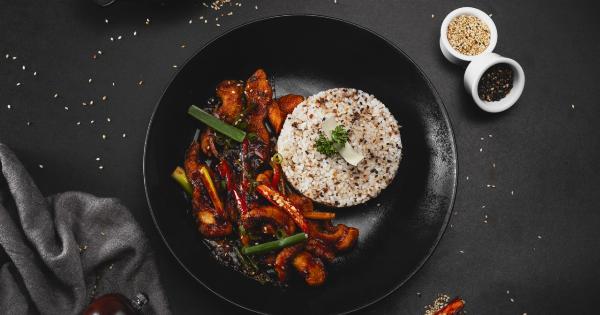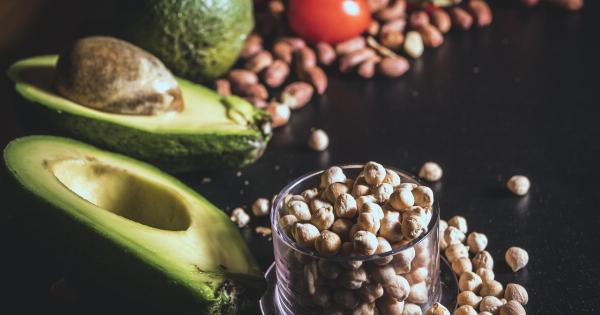Leftovers are a common occurrence in most households. Whether it’s a delicious meal from the previous night’s dinner or a leftover pizza, deciding when to throw out leftovers can sometimes be a confusing task.
Many factors come into play when determining the safety and freshness of leftover food. In this article, we will discuss when you should throw out leftovers and provide useful tips to help you make informed decisions.
Understanding Food Expiration Dates
One of the primary reasons people throw out leftovers is due to the expiration dates mentioned on the packaging. Understanding these dates is crucial in deciding whether to consume or discard leftover food.
There are primarily two types of expiration dates:.
Sell-By Date
The sell-by date is an indicator to the retailer of how long they can display a product for sale. It is not necessarily an indicator of food safety.
As a consumer, you can safely consume the leftover food if it is within a few days of the sell-by date, provided it has been stored properly.
Use-By Date
The use-by date is the last date recommended for the use of the product while at its peak quality. It is essential to adhere to this date to ensure the freshness and taste of the food.
If the leftovers have passed the use-by date, it is recommended to discard them to avoid any health risks.
Signs of Spoilage
Expiration dates are not foolproof, and sometimes food can spoil before the indicated date. Understanding the signs of spoilage can help you determine whether leftover food is still safe to consume. Here are some common signs to look out for:.
1. Foul Smell
If your leftovers emit a strong, foul odor, it is an indication that they have gone bad. Trust your sense of smell and discard any food that smells off or unpleasant.
2. Mold Growth
Mold growth is a clear indication that your leftovers are no longer safe to consume. If you notice any mold on the food, it is best to discard it immediately. Mold can produce toxins that can cause food poisoning.
3. Change in Texture
Leftovers that have become slimy or have an unusual texture should be avoided. This change in texture indicates bacterial growth, which can lead to foodborne illnesses.
4. Discoloration
If the color of your leftovers has changed significantly, it is a sign that the food has started to spoil. Discard any food that appears discolored or has dark spots.
Food Storage Guidelines
Proper food storage is essential in maintaining the freshness and safety of leftovers. Here are some general guidelines to follow:.
1. Refrigeration
Leftovers should be refrigerated within two hours of cooking or purchasing. Make sure to store them in shallow, airtight containers to promote even cooling and prevent bacterial growth.
2. Freezing
If you are unable to consume your leftovers within a few days, freezing them can be a great option. Freezing can help extend the shelf life of leftovers and retain their quality for a more extended period.
However, it’s essential to follow proper freezing techniques to avoid freezer burn.
3. Labeling
Always label your leftovers with the date of preparation or purchase to keep track of their freshness. This practice will help you identify which leftovers need to be consumed first.
General Timeframe for Leftovers
While there are specific guidelines for different types of leftovers, here is a general timeframe to consider:.
1. Cooked Meat and Poultry
Cooked meat and poultry leftovers can be safely consumed within 3-4 days if stored in the refrigerator. If frozen, they can last for up to three to four months.
2. Cooked Rice and Pasta
Cooked rice and pasta leftovers can last for about 3-5 days in the refrigerator. To ensure optimal freshness, store them in a sealed container.
3. Soups and Stews
Soups and stews can be safely consumed within 3-4 days if refrigerated properly. If you are unable to consume them within this timeframe, it is recommended to freeze them for longer storage.
4. Pizza
Pizza leftovers can be stored in the refrigerator for up to four days. To retain their crispness, it is advisable to reheat them in the oven rather than the microwave.
5. Salad
Salads with dressing should be consumed within one to two days to prevent wilting and bacterial growth. It is recommended to separate dressings and toppings from the greens to maintain freshness.
Final Thoughts
Knowing when to throw out leftovers is crucial for maintaining food safety and preventing foodborne illnesses. It is essential to trust your senses, understand expiration dates, and follow proper food storage guidelines.
By practicing these habits, you can minimize food waste and enjoy leftovers while ensuring your well-being.





























